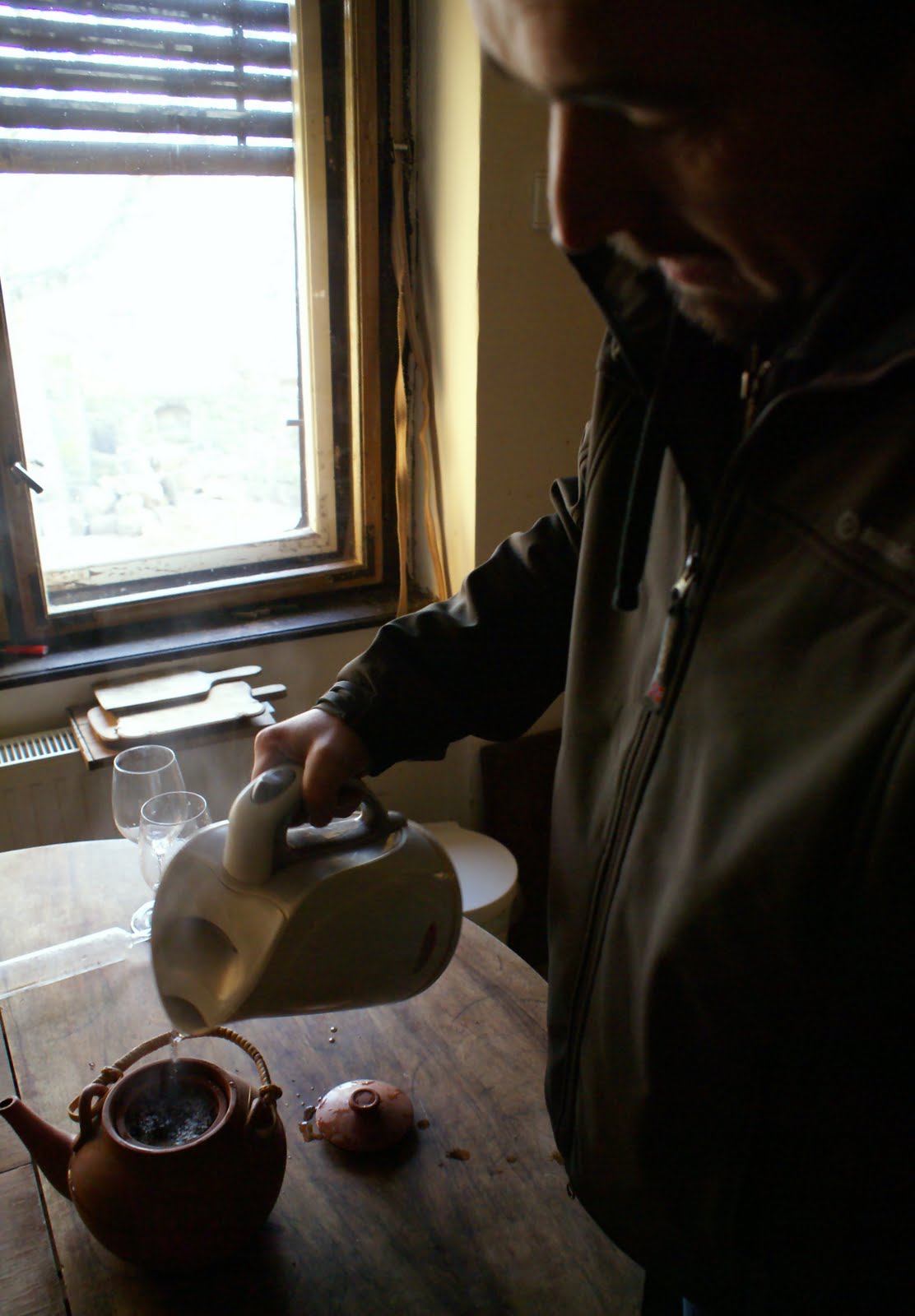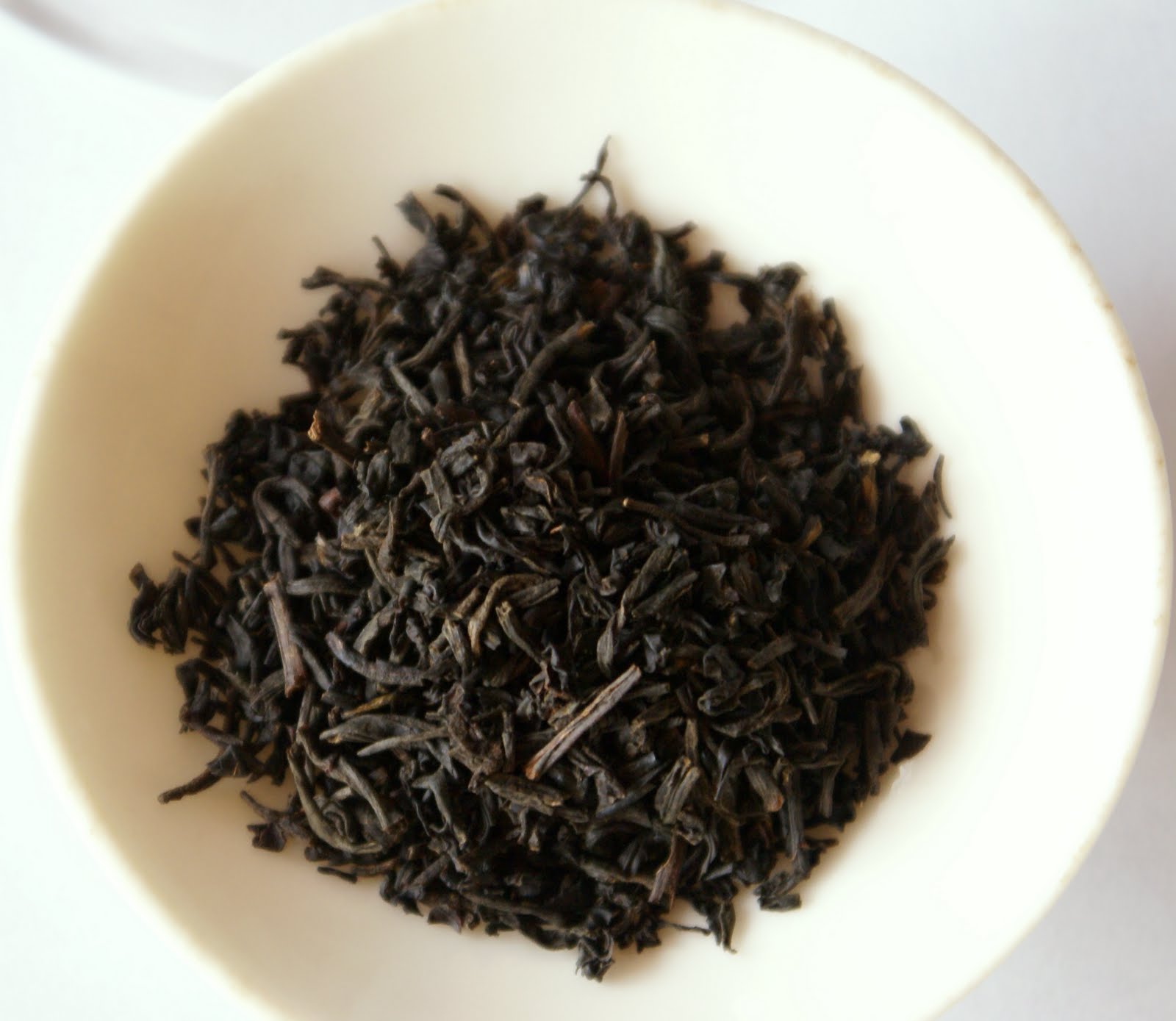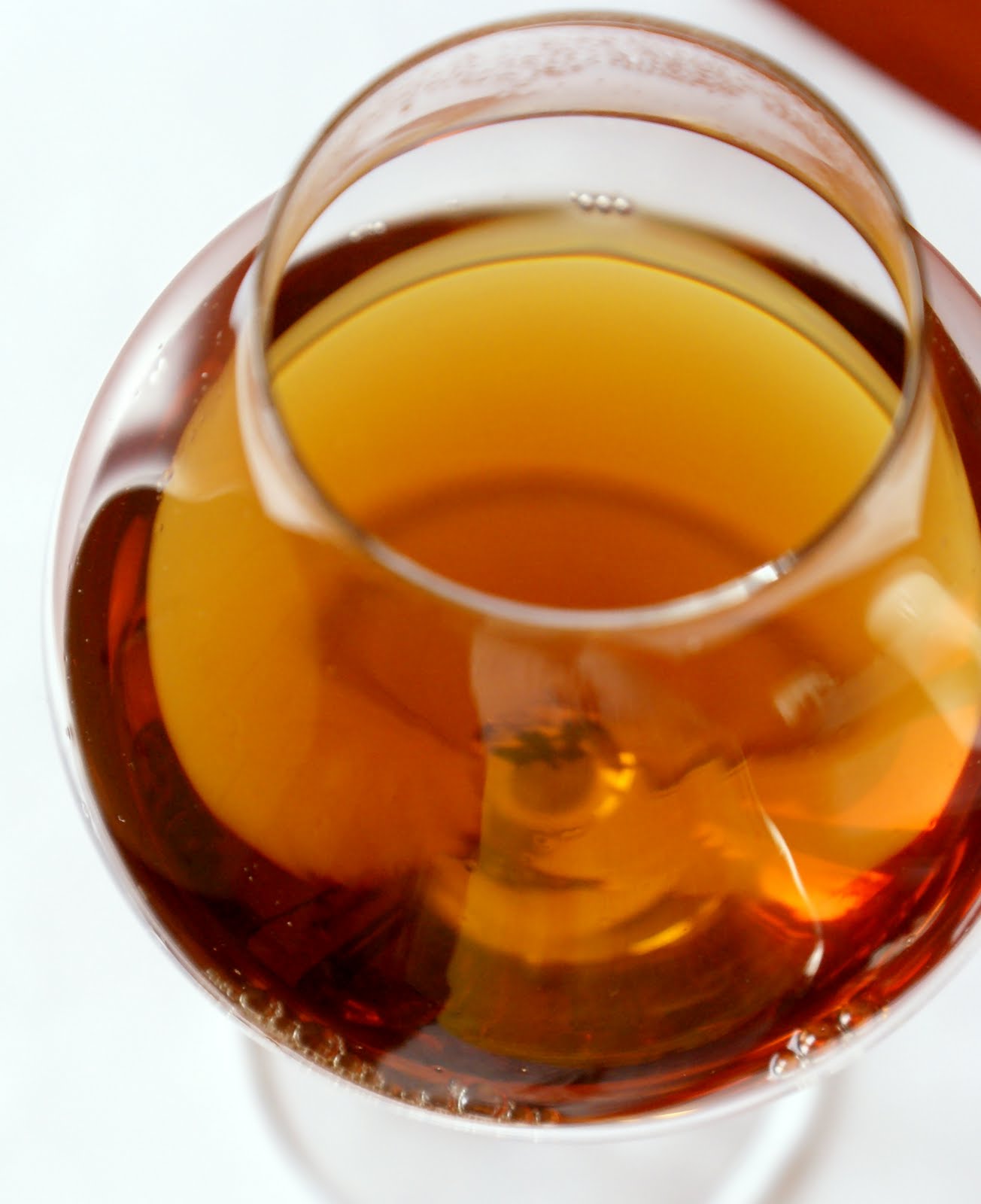2009 Hojo Lapsang Souchong
Posted on 18 March 2010
Lapsang Souchong appears to be the gateway to the world of tea for many people. Amidst a diet of no-name blacks and teabags it’s often the first tea people identify with a name and flavour. Perhaps because the latter is so much stronger than most other teas’?
Attila Homonna brewing Lapsang Souchong…
Even during a winery visit and tasting you can be treated to a cup of Lapsang, as shown by Tokaj vigneron Attila Homonna (read post about him here) when we met him in January. (To everybody’s surprise, being a champion of limpid dry white wines, Attila used a hefty dose of sugar with his Lapsang).
…and enjoying it.
I threw in some Lapsang with my recent order with Hojo Tea, eager to pay a new visit to my own gateway to the world of tea. The remarkable Hojo website includes a very thorough description of this tea that literally whets one’s appetite. I was particularly curious about the dried longan fruit taste, and the declared balanced smokiness.
To say this tea is unsmokey would be a gross overstatement. The smokey notes are very present and in a long brew of 2 minutes or more the aromatic profile is not so very different from a standard commercial Lapsang. It’s in the flavour that the gap is revealed: Hojo’s is a very clean tea, balanced, smooth and juicy, never degenerating into the bitter, woody, murky notes of cheaper Lapsang. The first impression is of a medium strong smokey taste applied to a fairly high-quality leaf.
Akira Hojo interestingly encourages to taste this tea in a tasting glass. I found this inspirational, but instead of using the whisky sniffer-like stemless tumbler you can see on Hojo’s website, I used a tasting glass especially designed for sweet wine (Schott-Zwiesel Top 10 series).
It’s really an interesting experiment. The colour of the tea appears much lighter than in white porcelain, and is a very transparent reddish. What this dessert wine glass does is to make all the aromas subtler. Although it’s hard to pinpoint exactly, there is a myriad of subtle understated aromas in succession: smoke of course, but also dried fruits, honey, nuttiness, smoked meat, baked fruits. One thing that doesn’t really work is taking a sip. It’s an often overlooked aspect of wine tasting glasses but a glass’s rim, or lip, vitally influences how the wine tastes in mouth. Here, the tea appears thin, tart and astringent, because the lip is far too narrow (compare mentally to a tea cup which is far wider, and makes the tea’s entry in mouth completely different). This particular glass was designed to make very sweet wines taste more balanced, and so it’s natural it emphasises acidity and tannins at the expense of sweetness. Lapsang would require just the opposite.
But another conclusion of this tea-in-glass tasting is that this Lapsang benefits from being brewed very light. Moderate amounts of leaf and flash brewing times render a tea that’s less dominated by smoke and has good subtlety and complexity. But at $45 / 100g I found this a tad pricey. (A 30g purchase is available).
Source of tea: own purchase.







